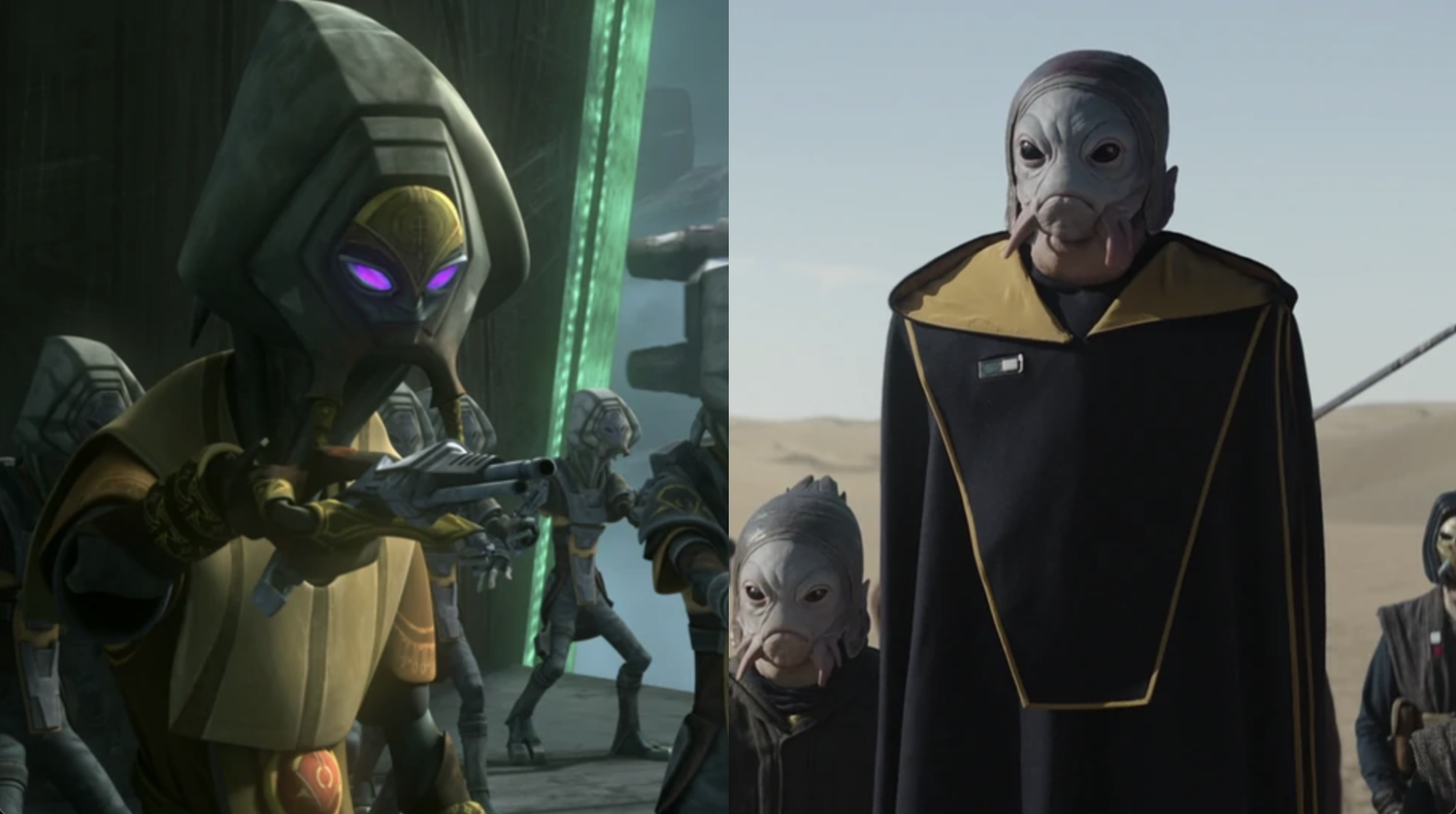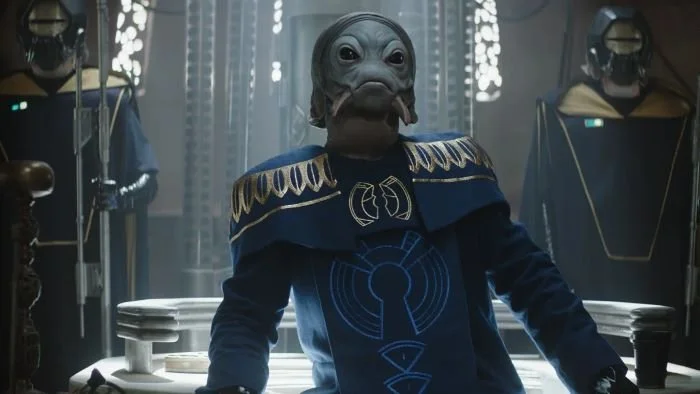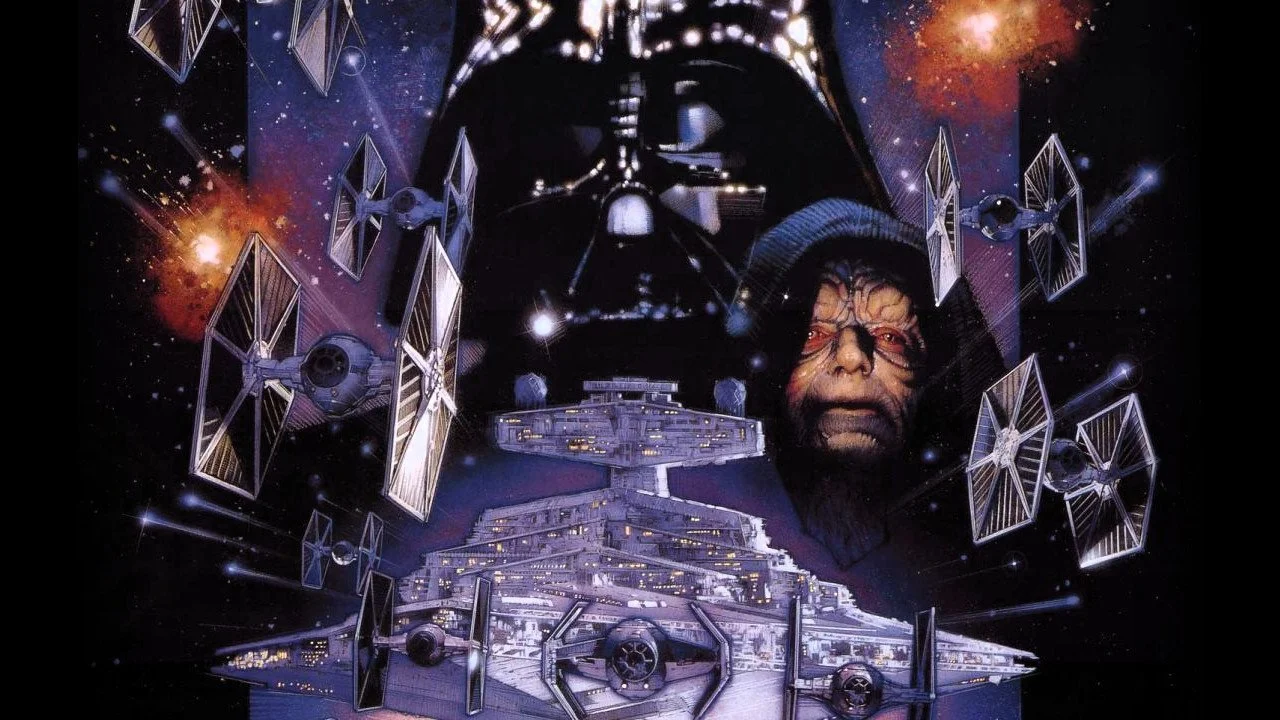Why The Pykes Look Different Between 'Star Wars' Animation and Live-Action
“A powerful part of the spice cartel. Their criminal activities had allowed them to almost completely control the production of raw spice, used to create a powerful drug.”
This is how former Chancellor Finis Valorum describes the Pyke Syndicate in “The Lost One,” an episode from the sixth season of Star Wars: The Clone Wars. Since their introduction in the animated series, the Pykes have gone on to become major players in the Star Wars galaxy’s criminal underworld. For the longest time, the Pyke Syndicate was confined to appearances in animation, novels, and comics. This changed with the release of Solo: A Star Wars Story. In the spinoff film, we saw Han Solo, Chewbacca, Lando Calrissian, Qi’ra, and L3-37 try to sneak coaxium off of Kessel without attracting the attention of Quay Tolsite, a high-ranking member of the Pyke Syndicate running slave and mining operations on the planet. Years later, the Pykes would return as central antagonists working against Boba Fett and his new gotra in The Book of Boba Fett. While the Pyke Syndicate’s presence in Star Wars media has been exciting, a good number of fans have also pointed out how different the Pykes look between animation and live action.
Throughout their animated appearances, the Pykes have been defined by their masks, large heads, and unsettlingly tiny faces. While the designs for their masks and other clothes have remained consistent, their physical features have been noticeably altered for their live-action appearances. Their heads and faces are now much more proportional, and the appendages beneath their mouths have been reduced in size. Is there an in-universe explanation for this? Unlikely. Although, I won’t discount the possibility of there being different types of Pykes with varying attributes, much like how Twi’leks and Togrutas have unique skin colors and different-sized lekku. Personally, I think the changes to the Pykes’ designs ultimately come down to compromise.
Image Source: Wookieepedia
RELATED:
Translating animated characters to live action is far from an easy feat. Beyond the Pykes, we also have examples of this in Cad Bane, Krrsantan, and Tera Sinube. When certain characters have been portrayed solely in animated or hand-drawn mediums for so long, creators will inevitably need to change certain elements of their original designs in order for them to be effectively portrayed by a live-action actor. In terms of the Pykes specifically, I imagine their heavily stylized animated designs were proportioned and simplified so as to make it easier for the actors in their costumes to give believable performances.
At the end of the day, what truly matters is how well every character works in the respective mediums they’re in. The animated Pykes work well for animation but may not have been practical for the live-action films and series they have appeared in since. While Lucasfilm could potentially create a reason in-universe for these differences in design, I personally do not need such an explanation. When all is said and done, the believability and authenticity of the world come first. If they did not, why else would George Lucas have been so meticulous in terms of making Tatooine so alive and populated? It has always been important for Star Wars to look like a place you could live in. And if that means making the Pykes’ heads a bit smaller, I say go ahead.
Image Source: StarWars.com
READ NEXT:





